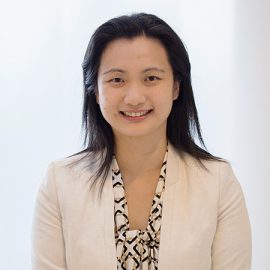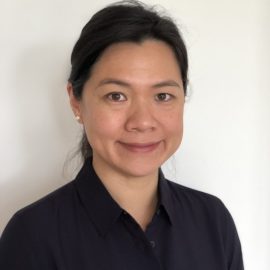
About
Paxton specialises in the care and management of children and adolescents with allergic conditions. His expertise is in food allergies, anaphylaxis, allergic rhinitis (hay fever), drug and insect sting allergies, eczema, immunotherapy (desensitisation) and disorders of the immune system. He graduated from the University of Melbourne in 2008 in Medicine, and completed his specialist training in Paediatric Allergy and Immunology at the Royal Children’s Hospital (RCH), Melbourne, and is a Consultant Paediatric Allergist and Immunologist at RCH. Paxton is a member of the Australasian Society of Clinical Immunology and Allergy (ASCIA).
As a clinician and a researcher, he is an Investigator on the Probiotic and Peanut Oral Immunotherapy (PPOIT) study which aims to induce long lasting tolerance to peanut, at the Murdoch Children’s Research Institute (MCRI). He also completed his PhD in Microbiology and has published over 25 international peer-reviewed journal publications including a book chapter and an international patent. A key project examined the state-wide prevalence of Victorian government school children at risk of anaphylaxis, which was published in the prestigious Journal of Allergy and Clinical Immunology. At MACCS medical group, he is a part of a vibrant and dedicated team to deliver the best possible service to the community.
With a young family, Paxton enjoys spending quality time with them, in addition to serving the community in volunteer positions, and various sporting and outdoor activities.
PUBLICATIONS
Patent
Australian Patent Application 2006904757 “Viral Vector” (filed 30th August 2006) and International Patent Application PCT/AU2007/001241 “Recombinant proteins”: E. Grgacic, D. Anderson, P. Loke, R. Anders. Assigned to Hepgenics Pty Ltd.
Book Chapter
Loke P and Sim TS. “Applications of Bioinformatics and Biocomputing to Microbiological Research”, in: YK Lee (ed), Microbial Biotechnology: Principles and Applications (2nd Edition) 2006. World Scientific Publishing, Singapore, pp169-198.
Journal Publications
Loke P, Heine RG, McWilliam V, Cameron DJ, Tang ML, and Allen KJ. Fecal microbial transplantation in a pediatric case of recurrent Clostridium difficile infection and specific antibody deficiency. Pediatr Allergy Immunol. 2016 Aug 6 (Epub ahead of print)
Loke P, Koplin J, Beck C, Field M, Dharmage S, Tang M, and Allen K. Statewide prevalence of school children at risk of anaphylaxis and rate of adrenaline autoinjector activation in Victorian government schools, Australia. J Allergy Clin Immunol. 2016 Aug; 138(2):529-35.
Loke P, Tantoco J, Ferguson P, Heloury Y, Kimber C, Oakley E and Cheng W. Accuracy of inter-hospital paediatric appendicitis referrals. Emergency Medicine Australasia(2012) 24: 414–419.
Fan L, Loke P, Healy A, Lightowlers MW, Gauci GC, Purcell DFJ and Anderson DA. The effect of antigen targeting sequences on antibody responses to hepatitis E virus DNA vaccines in rats and sheep. Vaccine (2006) 24, 1367-1377.
Goh LL, Koh R, Loke P and Sim TS. Thermostable malate synthase of Streptomyces thermovulgaris. Journal of Industrial Microbiology and Biotechnology (2003) 30: 577-581.
Goh LL, Loke P, Singh M and Sim TS. Soluble expression of a functionally active Plasmodium falciparum falcipain-2 to maltose-binding protein in Escherichia coli. Protein Expression and Purification (2003) 32, 194-201.
Loke P, Goh LL, Soh BS, Yeow P and Sim TS. Purification and characterization of recombinant malate synthase enzymes from Streptomyces coelicolor A3(2) andclavuligerus NRRL3585. Journal of Industrial Microbiology and Biotechnology (2002) 28(4), 239-243.
Tan AL, Loke P and Sim TS. Molecular cloning and functional characterisation of VanX, a D-alanyl-D-alanine dipeptidase from Streptomyces coelicolor A3(2). Research in Microbiology (2002) 153(1), 27-32.
Soh BS, Loke P and Sim TS. Cloning, heterologous expression and purification of an isocitrate lyase from Streptomyces clavuligerus NRRL 3585. Biochimica et Biophysica Acta (2001) 1522(2), 112-117.
Goh LL, Loke P and Sim TS. Replacement of arginine-171 and aspartate-453 in Streptomyces coelicolor malate synthase A by site-directed mutagenesis inactivates the enzyme. Applied Microbiology and Biotechnology (2001) 57(3), 363-367.
Loke P, Wee J, Seah KI and Sim TS. Rapid PCR screening of malate synthase genes from Streptomyces and the homology-based cloning of a malate synthase gene from Streptomyces griseus NCIMB 9001. World Journal of Microbiology and Biotechnology (2001) 17(6), 645-649.
Loke P and Sim TS. Mutational analysis of conserved glycines 42 and 256 in Cephalosporium acremoniumisopenicillin N synthase. Canadian Journal of Microbiology (2001) 47(10), 961-964.
Sim TS, Loke P, Lee MA, Singh M and Flotow H. Cloning and sequence characterisation of falcipain-2 from Plasmodium falciparum Gombak A strain (Malaysia). Parasitology Research (2001) 87(9), 683-686.
Loke P and Sim TS. A comparison of three site-directed mutagenesis kits. Naturforsch [C] (2001) 56(9-10), 810-813.
Loke P and Sim TS. Replacement of tyrosine-197 and the corresponding tyrosine-195 to isoleucine in Cephalosporium acremonium and Streptomyces clavuligerus isopenicillin N synthase. Z Naturforsch [C](2001) 56(9-10), 806-809.
Loke P and Sim TS. Site-directed mutagenesis of proline-285 to leucine in Cephalosporium acremoniumisopenicillin N synthase affects catalysis and increases soluble expression at higher temperatures. Naturforsch [C] (2001) 56, 413-415.
Loke P and Sim TS. Molecular cloning, heterologous expression and functional characterisation of a malate synthase gene from Streptomyces coelicolor A3(2). Canadian Journal of Microbiology (2000) 46(8), 764-769.
Sim TS and Loke P. Molecular studies on isopenicillin N synthases. (Review) Applied Microbiology and Biotechnology (2000) 54(1), 1-8.
Loke P and Sim TS. Mutational analysis of tyrosine-191 in the catalysis of Cephalosporium acremonium isopenicillin N synthase. Journal of Biochemistry (Tokyo) (2000) 127(4), 585-589.
Loke P, Ng CP and Sim TS. PCR cloning, heterologous expression and characterization of isopenicillin N synthase from Streptomyces lipmanii NRRL 3584. Canadian Journal of Microbiology (2000) 46(2), 166-170.
Loke P and Sim TS. Site-directed mutagenesis of arginine-89 supports the role of its guanidino side-chain in the substrate-binding of Cephalosporium acremoniumisopenicillin N synthase. FEMS Microbiology Letters (1999) 179, 423-429.
Loke P and Sim TS. Glutamine-230 influences enzyme solubility but not catalysis in Streptomyces clavuligerus isopenicillin N synthase. FEMS Microbiology Letters (1999) 173, 439-443.
Loke P and Sim TS. Analysis of glutamines in catalysis in Cephalosporium acremonium isopenicillin N synthase by site-directed mutagenesis. Biochemical and Biophysical Research Communications (1998) 252, 472-475.
Loke P and Sim TS. Mutational evidence for the role of serine-283 in Cephalosporium acremonium isopenicillin N synthase. FEMS Microbiology Letters (1998) 165, 353-356.
Loke P and Sim TS. Catalytic activity in Cephalosporium acremonium isopenicillin N synthase does not involve glutamine-234. Biochemical and Biophysical Research Communications (1998) 248, 559-561.
Loke P and Sim TS. Analysis of a conserved arginine R281L in catalysis in Cephalosporium acremonium Isopenicillin N synthase. FEMS Microbiology Letters (1998) 164, 107-110.
Loke P, Sim J and Sim TS. Functional analysis of a conserved aspartate D218 in Cephalosporium acremonium Isopenicillin N synthase. FEMS Microbiology Letters (1997) 157, 137-140.




















